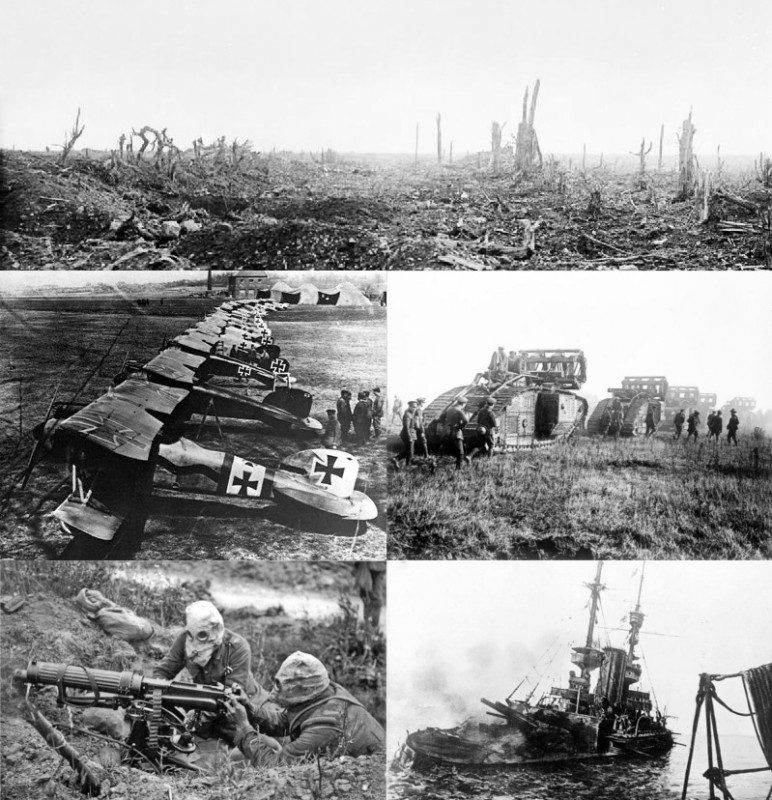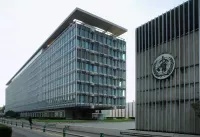Sarajevo is the capital and largest city of Bosnia and Herzegovina, situated within the greater Sarajevo valley, surrounded by the Dinaric Alps along the Miljacka River. Its administrative limits contain a population of 275,524, while the Sarajevo Canton, which includes the city and nearby municipalities, has 413,593 residents. Sarajevo is located in the heart of the Balkans, a region of Southeastern Europe.
1908: Annexation by Austria-Hungary
In 1908, Austria-Hungary completed the annexation of Bosnia and Herzegovina, angering the Serbs.
1908: Formal annexation of Bosnia
In 1908, the territory of Bosnia was formally annexed and turned into a condominium jointly controlled by Austrian Cisleithania and Hungarian Transleithania.
1909: Religious composition of Sarajevo
By 1909, about 50% of the city's inhabitants were Muslim, 25% were Catholic, 15% were Orthodox, and 10% were Jewish.
June 1914: Assassination of Archduke Franz Ferdinand
On 28 June 1914, Archduke Franz Ferdinand of Austria and his wife Sophie were assassinated in Sarajevo by Gavrilo Princip, triggering World War I. This was followed by the Anti-Serb riots in Sarajevo.
1914: Assassination of Archduke Franz Ferdinand
In 1914, Archduke Franz Ferdinand was assassinated in Sarajevo by Gavrilo Princip, a Young Bosnia activist. This event sparked World War I and led to the end of Austro-Hungarian rule in Bosnia.
1921: Establishment of the Sarajevo National Theatre
In 1921, the Sarajevo National Theatre was established.
1930: Regular flights to Sarajevo began
In 1930, Aeroput, a domestic airliner, opened a regular route linking Belgrade to Podgorica through Sarajevo.
1936: HPD "Bjelašnica" mountaineering chapter details
In 1936, the local chapter of the HPS is HPD "Bjelašnica", which had 216 members under the Josip Fleger presidency. At the time, it had a ski section.
1937: HPD "Bjelašnica" mountaineering chapter details
In 1937, the HPD "Bjelašnica" mountaineering chapter had 234 members, and Ante Martinović was elected its president.
1938: HPD "Bjelašnica" mountaineering chapter details
In 1938, the HPD "Bjelašnica" mountaineering chapter had 230 members, with Josip Fleger again president.
April 1941: Capture of Sarajevo
On 15 April 1941, Sarajevo was captured by the 16th Motorized Infantry Division of the German army during World War II.
August 1941: Ustaše arrest Serbs
In August 1941, Ustaše militia arrested about one hundred Serbs suspected of ties to resistance armies in Sarajevo, executing them or deporting them to concentration camps.
October 1941: Resolution of Sarajevo Muslims
On 12 October 1941, 108 notable Bosniak citizens of Sarajevo signed the Resolution of Sarajevo Muslims, condemning the genocide of Serbs organized by the Ustaše and requesting security for all citizens.
January 1942: Lowest recorded temperature in Sarajevo
In January 1942, Sarajevo recorded its lowest temperature of −26.2 °C (−15.2 °F).
1942: Serbs find refuge in Sarajevo
By mid-summer 1942, around 20,000 Serbs found refuge in Sarajevo from Ustaše terror.
1943: Allied Bombing
From 1943 to 1944, the city was bombed by the Allies.
1943: Oslobođenje newspaper founded
Oslobođenje (Liberation), Sarajevo's longest-running newspaper, was founded in 1943.
1943: ZAVNOBIH First Meeting
The Vraca Memorial Park, a monument for victims of World War II, was dedicated on 25 November, the "Statehood Day of Bosnia and Herzegovina" when the ZAVNOBIH held their first meeting in 1943.
1944: Allied Bombing
From 1943 to 1944, the city was bombed by the Allies.
April 1945: Liberation of Sarajevo
On 6 April 1945, Vladimir Perić Valter died while leading the liberation of Sarajevo.
May 1945: Ustaše headquarters
In the period February–May 1945, Maks Luburić set up a Ustaše headquarters in a building known as Villa Luburić and used it as a torture and execution place whose 323 victims were identified after the war.
1945: Creation of public television station
The Radio and Television of Bosnia and Herzegovina (BHRT) was created in 1945 under the umbrella of the Yugoslav Radio Television (JRT).
August 1946: Highest recorded temperature in Sarajevo
In August 1946, Sarajevo recorded a temperature of 40.7 °C (105 °F), which was the highest recorded temperature at the time.
1949: Completion of railway station building
The ceremonial completion of the new functionalist Sarajevo railway station building took place in 1949.
1960: Tram system upgrade
In 1960, the tram system in Sarajevo was upgraded to 1,435 mm standard gauge.
1961: Beginnings of the Sarajevo school of pop rock
In 1961, the Sarajevo school of pop rock began developing in the city with bands like Indexi and Kodeksi.
1961: First television program aired
Radio and Television of Bosnia and Herzegovina (BHRT) had its first television program aired in 1961.
1966: Construction of new airport began
The construction of the new Sarajevo Airport began in 1966 at its present location.
1967: Electrification of railway station
The Sarajevo railway station was electrified in 1967, as part of the early electrification program introduced in Bosnia.
June 1969: Sarajevo Airport opened
Sarajevo Airport opened on 2 June 1969 for domestic traffic.
1969: Continuous programming started
Continuous programming started on Radio and Television of Bosnia and Herzegovina (BHRT) in 1969.
1969: Airfield in Butmir remained in use
The airfield in Butmir remained in use until 1969.
1969: Early electrification program
The electrification program introduced in Bosnia until 1969.
1970: First international destination served
In 1970, Frankfurt became the first international destination served from Sarajevo Airport.
1979: KK Bosna wins the European Championship
In 1979, the basketball club KK Bosna won the European Championship.
1981: Sarajevo's GDP per capita
In 1981, Sarajevo's GDP per capita was 133% of the Yugoslav average.
1984: Sarajevo hosts the Olympics
In 1984, Sarajevo hosted the Olympics.
1984: 1984 Winter Olympics in Sarajevo
In 1984, Sarajevo hosted the Winter Olympics, leading to a tourism boom and one of the city's most prosperous decades.
1984: Sarajevo hosted the 1984 Winter Olympics
In 1984, Sarajevo hosted the Winter Olympics, marking a prosperous period for the city.
1984: Winter Olympics venues constructed
In 1984, venues were constructed in the mountains around Sarajevo for the Winter Olympics events.
1984: Sports-related tourism
Sarajevo's sports-related tourism in 1984 uses the legacy facilities of the Winter Olympics, especially the skiing facilities on nearby mountains.
1984: Cable car landmark
The Sarajevo cable car was a key landmark during the 1984 Winter Olympics.
1984: Zetra Stadium used as temporary hospital
The ice arena for the 1984 Olympics, Zetra Stadium, was used during the war as a temporary hospital and, later, for housing NATO troops of the IFOR.
1991: Ethnic distribution in Sarajevo
In 1991, according to the census, 49.2% of Sarajevo's population were Bosniaks, 29.8% Serbs, 10.7% Yugoslavs, 6.6% Croats, and 3.6% other ethnicities.
1991: The Sarajevo school of pop rock era ends
In 1991, the Sarajevo school of pop rock era ended.
1991: 1991 census for Sarajevo
The 1991 census indicates that before the siege, the city and its surrounding areas had a population of 525,980.
1991: Yugoslav census recorded population
The last official Yugoslav census took place in 1991 and recorded 527,049 people living in the city of Sarajevo.
April 1992: Start of the Siege of Sarajevo
In April 1992, the Siege of Sarajevo began as part of the Yugoslav Wars. This was the longest siege of a capital city in modern history.
April 1992: Siege of Sarajevo began
The Siege of Sarajevo began on 5 April 1992, resulting in large-scale destruction and population shifts.
May 1992: Serb Blockade of Sarajevo
From 2 May 1992, Serbs blockaded Sarajevo, and Bosnian government defense forces were poorly equipped and unable to break the siege.
1995: Dnevni avaz newspaper founded
Dnevni avaz (Daily Voice) newspaper was founded in 1995.
1995: First Sarajevo Film Festival held
In 1995, the first Sarajevo Film Festival was held in Sarajevo, while the city was still at war.
1995: Savatage releases "Christmas Eve (Sarajevo 12/24)"
In 1995, the heavy metal band Savatage released the song "Christmas Eve (Sarajevo 12/24)" on their album Dead Winter Dead, about a cello player in war-torn Sarajevo.
1995: Airport's role retook
Since the Dayton Agreement in 1995, Sarajevo airport retook its role as the main air portal to Bosnia and Herzegovina.
February 1996: End of the Siege of Sarajevo
In February 1996, the Siege of Sarajevo ended after 1,425 days during the Bosnian War.
February 1996: Siege of Sarajevo ended
The Siege of Sarajevo ended on 29 February 1996, after being the longest siege of a capital city in the history of modern warfare.
1996: Division of territory
Division of the territory according to the Dayton Agreement resulted in a mass exodus in early 1996 of some 62,000 Sarajevo Serbs from the city and its suburbs, creating today's more monoethnic post-war city.
1996: Trans-Siberian Orchestra re-releases "Christmas Eve (Sarajevo 12/24)"
In 1996, the Trans-Siberian Orchestra re-released the song "Christmas Eve (Sarajevo 12/24)" on their debut album Christmas Eve and Other Stories, gaining instant success.
1997: Central Bank of Bosnia and Herzegovina Opens
In 1997, the Central Bank of Bosnia and Herzegovina opened in Sarajevo.
1998: French International School of Sarajevo established
The French International School of Sarajevo was established in 1998.
2003: Marriage registration data analysis
According to an analysis of marriage registration data, 67% of people marrying in 2003 identified as Bosniak or Muslim.
2003: BH Telecom Indoors established
Since 2003, BH Telecom Indoors has been an annual tennis tournament in Sarajevo.
2005: Schools in Sarajevo
As of 2005, there are 46 elementary schools and 33 high schools in Sarajevo, including schools for children with special needs.
2006: Reconstruction work started on Parliament
In late 2006, reconstruction work started on Parliament.
October 2007: Opening of the Alija Izetbegović Museum
On October 19, 2007, the Alija Izetbegović Museum opened in Sarajevo's old town fort, commemorating the work of Alija Izetbegović.
2007: Reconstruction work finished on Parliament
In 2007, reconstruction work was finished on Parliament.
2007: Sarajevo Half Marathon Established
Since 2007, the Sarajevo Half Marathon has been organized every year in late September.
December 2009: Lonely Planet Recommendation
In December 2009, Lonely Planet recommended Sarajevo as one of the top ten cities to visit in 2010.
December 2009: Sarajevo listed as a top ten city
In December 2009, Sarajevo was listed as one of the top ten cities to visit in 2010 by Lonely Planet.
2009: Sarajevo awarded 2009 Special Olympic winter games, later canceled
Sarajevo was awarded the 2009 Special Olympic winter games, but later canceled these plans.
2010: Air pollution in Sarajevo
In 2010, the annual average PM2.5 concentration in Sarajevo was estimated to be 30 μg/m based on PM10 measurement, three times higher than WHO guidelines.
2010: Recommended city to visit
Lonely Planet recommended Sarajevo as one of the top ten cities to visit in 2010.
2010: Proposal of subway system
Sarajevo architect Muzafer Osmanagić proposed a study called "Eco Energy 2010–2015" proposing a subway system underneath the bed of the river Miljacka.
2011: Sarajevo hosts the 51st World Military Skiing Championship
In 2011, Sarajevo hosted the 51st World Military Skiing Championship, the first international event of such standing since the 1984 Olympics.
2011: Sarajevo nominated as European Capital of Culture
In 2011, Sarajevo was nominated as the 2014 European Capital of Culture.
March 2012: Federation investment in A1
Up until March 2012, the Federation of Bosnia and Herzegovina invested around 600 million euros in the A1 highway.
December 2012: Friendship Park dedication
On 24 December 2012, a park dedicated as the Friendship Park was inaugurated. It features two brass sculptures resembling mourning mothers, commemorating the friendship between Sarajevo and Baku.
2012: Extension of passenger terminal started
In the fall of 2012, plans for the extension of the passenger terminal at Sarajevo airport were started.
2013: Sarajevo Canton Census
According to the 2013 census, the population of the Sarajevo Canton was 413,593.
2014: Sarajevo nominated as European Capital of Culture
In 2011, Sarajevo was nominated as the 2014 European Capital of Culture.
2014: Anti-government protests and flooding
In 2014, Sarajevo experienced anti-government protests and riots, as well as record rainfall that caused historic flooding.
2014: Completion of highway sections
In 2014, the sections Sarajevo-Zenica and Sarajevo-Tarčin of the highway were completed, including the Sarajevo Beltway ring road.
2015: Airport upgrade
Between 2015 and 2018, Sarajevo airport was upgraded for more than 25 million euros.
2015: Proposal of subway system
Sarajevo architect Muzafer Osmanagić proposed a study called "Eco Energy 2010–2015" proposing a subway system underneath the bed of the river Miljacka.
June 2016: 2013 census final results published
In June 2016, the final results of the 2013 census were published, providing population figures for the Sarajevo Canton and its municipalities.
2016: WHO Air Pollution Report
According to the 2016 World Health Organization's Ambient Air Pollution Database, the annual average PM2.5 concentration in 2010 was estimated to be 30 μg/m based on PM10 measurement, which is 3 times higher than recommended by WHO Air Quality Guidelines for the annual average PM2.5.
2017: Passenger traffic at Sarajevo Airport
In 2017, 957,971 passengers travelled through Sarajevo Airport.
2017: Rebuilding of cable car
The Sarajevo cable car was rebuilt in 2017.
April 2018: Reopening of Sarajevo cable car
On 6 April 2018, the rebuilt Sarajevo cable car reopened, running from Sarajevo to the slopes of Trebević.
September 2018: Federal Hydrometeorological Institute
Real-time air quality data in the form of PM10, ozone, NO2, CO and SO2 by the Federal Hydrometeorological Institute was archived 13 September 2018 at the Wayback Machine.
2018: Airport upgrade
Between 2015 and 2018, Sarajevo airport was upgraded for more than 25 million euros.
2018: Trebević cable car reconstruction
The Trebević cable car in Sarajevo was reconstructed in 2018, which became one of the most popular tourist attractions in the city.
February 2019: Sarajevo hosts European Youth Olympic Winter Festival
In February 2019, Sarajevo and East Sarajevo hosted the European Youth Olympic Winter Festival (EYOWF).
October 2019: Sarajevo designated as UNESCO Creative City
In October 2019, Sarajevo was designated as a UNESCO Creative City for its focus on culture in development strategies.
2019: Tourist visits in Sarajevo
In 2019, Sarajevo had 733,259 tourists visiting the city, with 1,667,545 overnight stays, which was 20% more than in 2018.
2019: Sarajevo Canton exports and imports
In 2019, the total export for the Sarajevo Canton was about 1,427,496,000 KM, with most exports heading to Germany. The total import was about 4,872,213,000 KM, primarily from Croatia.
January 2021: Purchase of trolleybuses
In January 2021, Sarajevo bought 25 new BKM 433 trolleybuses.
August 2021: Tram track renovation
Tram track renovation in Sarajevo began in August 2021.
September 2021: Purchase of Stadler Tango trams
In September 2021, Sarajevo bought 15 new Stadler Tango trams.
March 2023: Gross pay in Sarajevo
In March 2023, the gross pay in Sarajevo was KM 2,497 or €1,269, while net salary was KM 1,585 or €805.
September 2023: End of tram track renovation
Tram track renovation in Sarajevo lasted until September 2023.
December 2023: Arrival of first new tram
The first of the new Stadler Tango trams arrived in Sarajevo in December 2023.
August 2024: High temperature recorded
On 13 August 2024, Sarajevo recorded a temperature of 39.7 °C (103.5 °F), the highest since 1946.
October 2024: National Geographic Declares Sarajevo Best World Destination
In October 2024, National Geographic declared Sarajevo as the best world destination for 2025 according to its readers.
2024: Expected arrival of new trams
The remaining Stadler Tango trams are expected to arrive in Sarajevo by the summer of 2024.
2025: Best world destination
According to National Geographic's readers, Sarajevo will be the best world destination for 2025.
Mentioned in this timeline

Basketball is a team sport played on a rectangular court...

Christmas is an annual festival celebrated on December th commemorating...
Germany officially the Federal Republic of Germany is a Western...
World War II - was a global conflict between the...

World War I a global conflict between the Allies and...

The World Health Organization WHO is a specialized agency of...
Trending
Benin officially the Republic of Benin is a West African country bordered by Togo Nigeria Burkina Faso and Niger Its...
The foot is a crucial anatomical structure present in numerous vertebrate species Serving as the terminal part of a limb...
17 days ago Polls Indicate Negative Voter Sentiment Towards White House Handling of the Economy.

26 days ago Florence Pugh Addresses Online Abuse Regarding Zach Braff Relationship and its Impact.

6 months ago Aljamain Sterling questions Sean O'Malley's stardom, personality deemed 'a little dry'.
Brent Pry is an American football coach who recently served as the head coach at Virginia Tech from until his...
Popular
Matt and Ross Duffer known as the Duffer Brothers are...
Aftyn Alyssa Behn is an American politician currently serving as...

Candace Owens is an American conservative political commentator and author...

XXXTentacion born Jahseh Dwayne Ricardo Onfroy was a controversial yet...

Ilhan Omar is an American politician currently serving as the...

Lane Kiffin is an American football coach currently serving as...